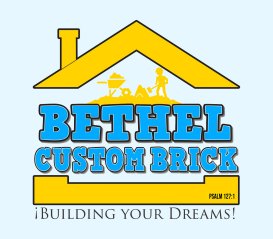Your chimney is more than just a functional component of your home—it plays a crucial role in ensuring safe and efficient fireplace operation while also contributing to your home’s structural integrity and aesthetic appeal. Over time, exposure to weather, age, and regular use can lead to structural weaknesses that, if left unaddressed, can pose significant safety hazards and costly repairs. Knowing how to spot these weaknesses and address them promptly is key to maintaining a safe and long-lasting chimney.
Common Signs of Structural Weakness in Your Chimney
Recognizing the early warning signs of structural damage is critical for preventing more severe problems. Here are the most common indicators that your chimney may have structural weaknesses:
1. Cracks in the Masonry:
- What to Look For: Vertical or horizontal cracks in the bricks or mortar can indicate shifting or settling.
- Why It’s Concerning: Cracks allow moisture to seep in, weakening the structure and leading to further damage.
2. Spalling Bricks:
- What to Look For: Bricks that are flaking, crumbling, or breaking apart.
- Why It’s Concerning: Spalling compromises the strength of the chimney and is often caused by water infiltration.
3. Leaning or Tilting Chimney:
- What to Look For: A visibly leaning chimney or one that appears to be separating from the house.
- Why It’s Concerning: A leaning chimney is a serious structural issue that poses safety risks and requires immediate attention.
4. Damaged or Missing Mortar:
- What to Look For: Gaps, crumbling mortar, or missing sections between the bricks.
- Why It’s Concerning: Weakened mortar joints reduce the overall stability of the chimney.
5. Chimney Crown Cracks:
- What to Look For: Visible cracks or deterioration in the chimney crown.
- Why It’s Concerning: A damaged crown allows water to enter the chimney, leading to internal damage and reduced lifespan.
6. Efflorescence:
- What to Look For: White, powdery residue on the surface of the bricks.
- Why It’s Concerning: Efflorescence indicates excessive moisture, which can weaken the masonry.
7. Interior Water Leaks:
- What to Look For: Damp walls, water stains, or musty odors near the fireplace.
- Why It’s Concerning: Water leaks suggest the chimney is not adequately sealed or has structural vulnerabilities.
Steps to Address Structural Weaknesses in Your Chimney
If you’ve identified signs of structural damage, taking the following steps can help address the issues and restore your chimney’s integrity:
1. Schedule a Professional Inspection:
- Why It’s Important: A certified chimney expert can thoroughly assess the damage and recommend the appropriate repairs.
- What to Expect: The inspection may include visual checks, video scanning, and tests for structural stability.
2. Repointing Damaged Mortar:
- What It Involves: Removing deteriorated mortar and replacing it with fresh, durable mortar.
- Why It’s Effective: Repointing restores stability to the masonry and prevents further water infiltration.
3. Repairing or Replacing Cracked Bricks:
- What It Involves: Replacing spalled or damaged bricks with new ones that match the existing structure.
- Why It’s Effective: Replacing damaged bricks strengthens the chimney and maintains its appearance.
4. Fixing the Chimney Crown:
- What It Involves: Repairing cracks or rebuilding the crown with waterproof materials.
- Why It’s Effective: A sound chimney crown protects the entire structure from moisture.
5. Installing a Chimney Liner:
- What It Involves: Adding or replacing a liner to protect the chimney interior from heat and corrosive byproducts.
- Why It’s Effective: A liner improves safety and extends the life of the chimney.
6. Waterproofing the Chimney:
- What It Involves: Applying a breathable waterproof sealant to the masonry.
- Why It’s Effective: Waterproofing prevents moisture from seeping into the bricks and mortar, reducing the risk of spalling and efflorescence.
7. Addressing Foundation Issues:
- What It Involves: Repairing or reinforcing the chimney’s foundation if structural instability is detected.
- Why It’s Effective: A strong foundation ensures the chimney’s stability and prevents tilting or leaning.
Why Timely Repairs Matter
Delaying repairs to a structurally compromised chimney can lead to:
- Increased Repair Costs: Small issues like cracks or spalling can worsen over time, requiring more extensive and expensive repairs.
- Safety Risks: A weakened chimney poses risks of collapse, chimney fires, or carbon monoxide leaks.
- Decreased Property Value: Visible damage to the chimney can detract from your home’s curb appeal and marketability.
How to Maintain a Healthy Chimney
To prevent structural weaknesses from developing, regular maintenance is key. Follow these tips:
- 1. Schedule Annual Inspections: Regular inspections can catch issues early and prevent costly repairs.
- 2. Keep the Chimney Clean: Annual cleaning removes creosote and debris that can contribute to damage.
- 3. Use Waterproofing Treatments: Protect the chimney from moisture with periodic waterproofing applications.
- 4. Burn Seasoned Wood Only: Avoid burning unseasoned or green wood, which produces more creosote and moisture.
- 5. Check for Damage After Severe Weather: Inspect your chimney for cracks or leaks following storms or freezing conditions.
Bethel Custom Brick – Your Chimney Repair Experts in the Detroit Metro Area
At Bethel Custom Brick, we specialize in identifying and repairing structural weaknesses in masonry chimneys. Serving the Detroit Metro area, our skilled team uses high-quality materials and expert techniques to restore your chimney’s safety, functionality, and appearance. Contact us today to schedule a professional inspection and protect your home with our reliable chimney repair services.


